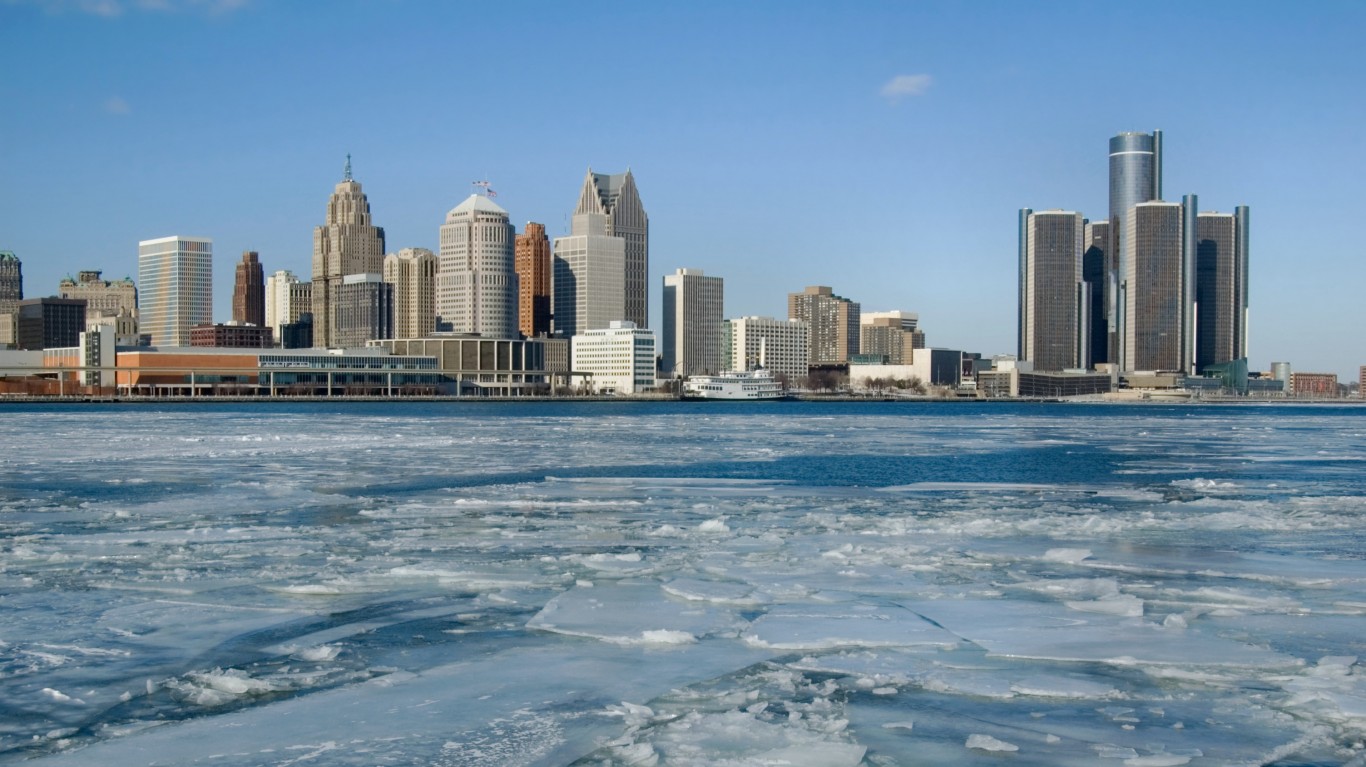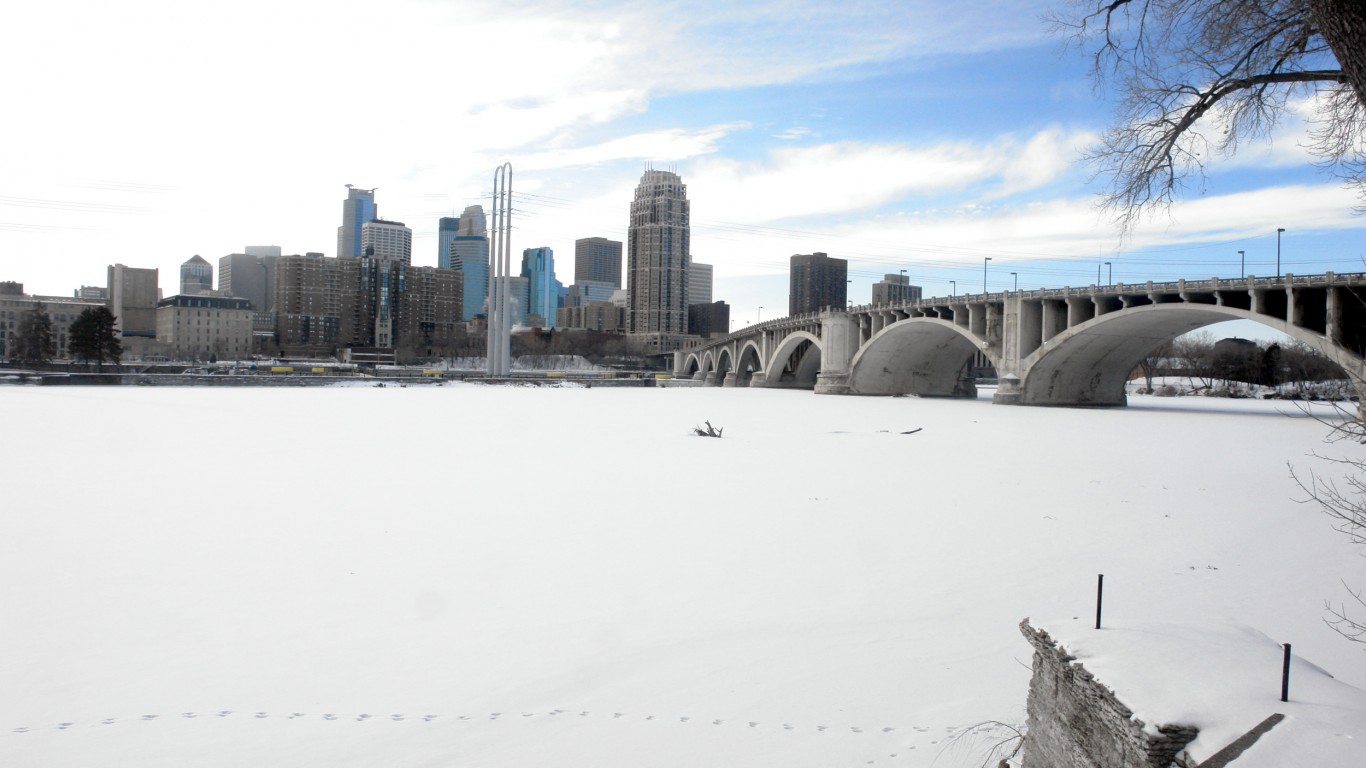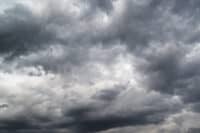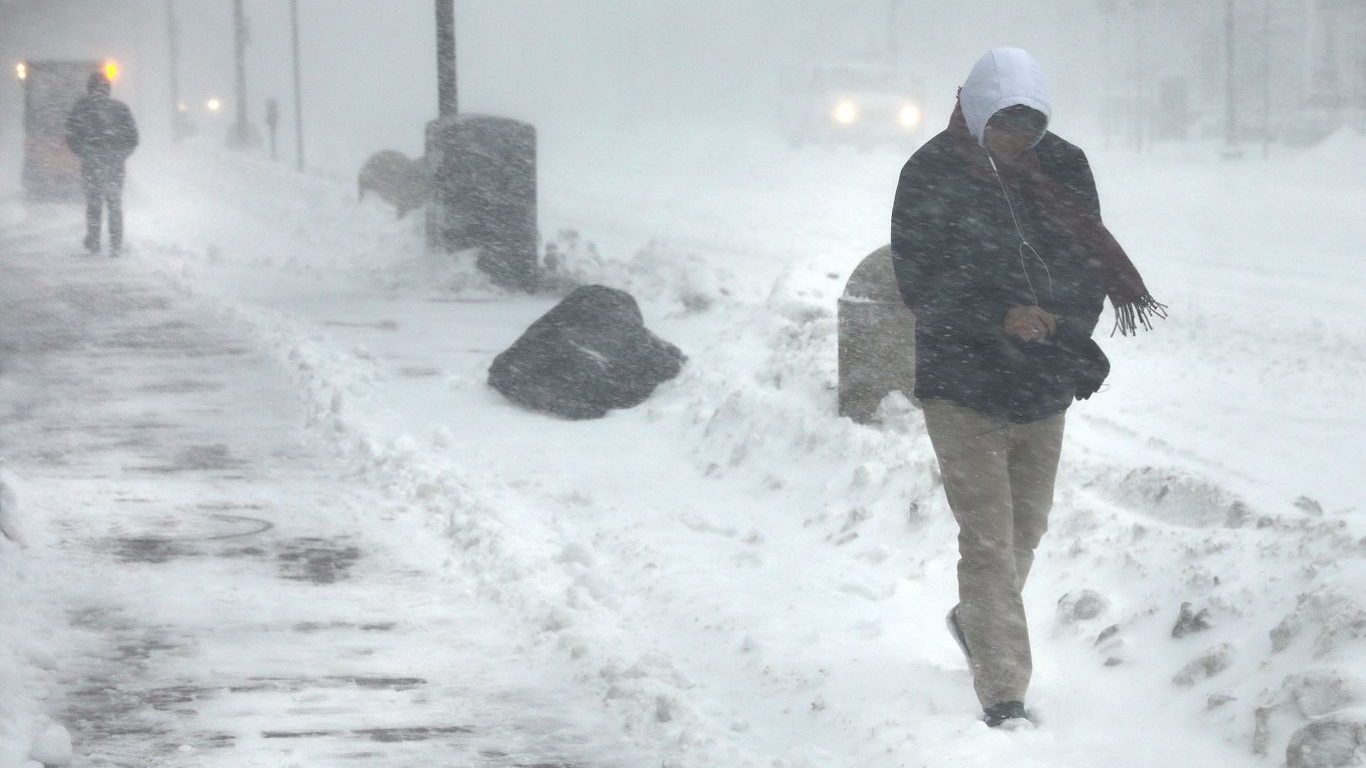
In the United States, January is the coldest month of the year, but February is a close second. In 2021, the average temperature in the U.S. was 30.61° F, nearly 4 degrees lower than January’s temperature that year. Snowbirds will spend this month safely ensconced in the country’s warmest states. Many of these people will be coming from the coldest states in the U.S. (Also read: The Coldest Place in the World)
So, what are America’s 15 coldest states in the month of February? According to the NOAA’s measurements of mean temperature, the coldest states are:
15. Connecticut
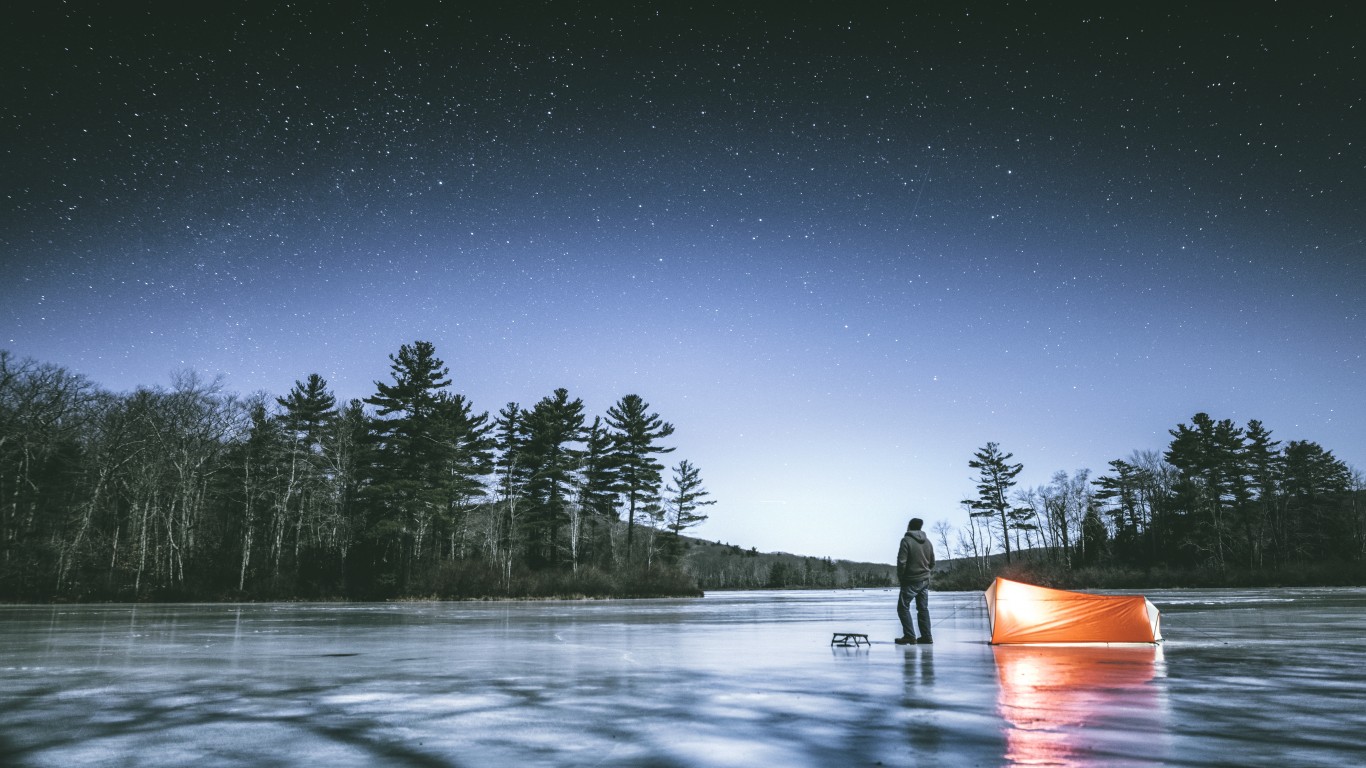
Located in the American Northeast, Connecticut is susceptible to fronts sweeping from the Arctic through Canada. In 1934, much of the East Coast experienced a brutal cold snap. Many February records were set then, and this is Connecticut’s coldest February on record. Its coldest day, however, was in 1943.
- Average February temperature through 2000: 26.3°F
- Coldest February average on record: 13.3°F, 1934
- Record February low temperature: -32°F, February 16, 1943
14. Massachusetts
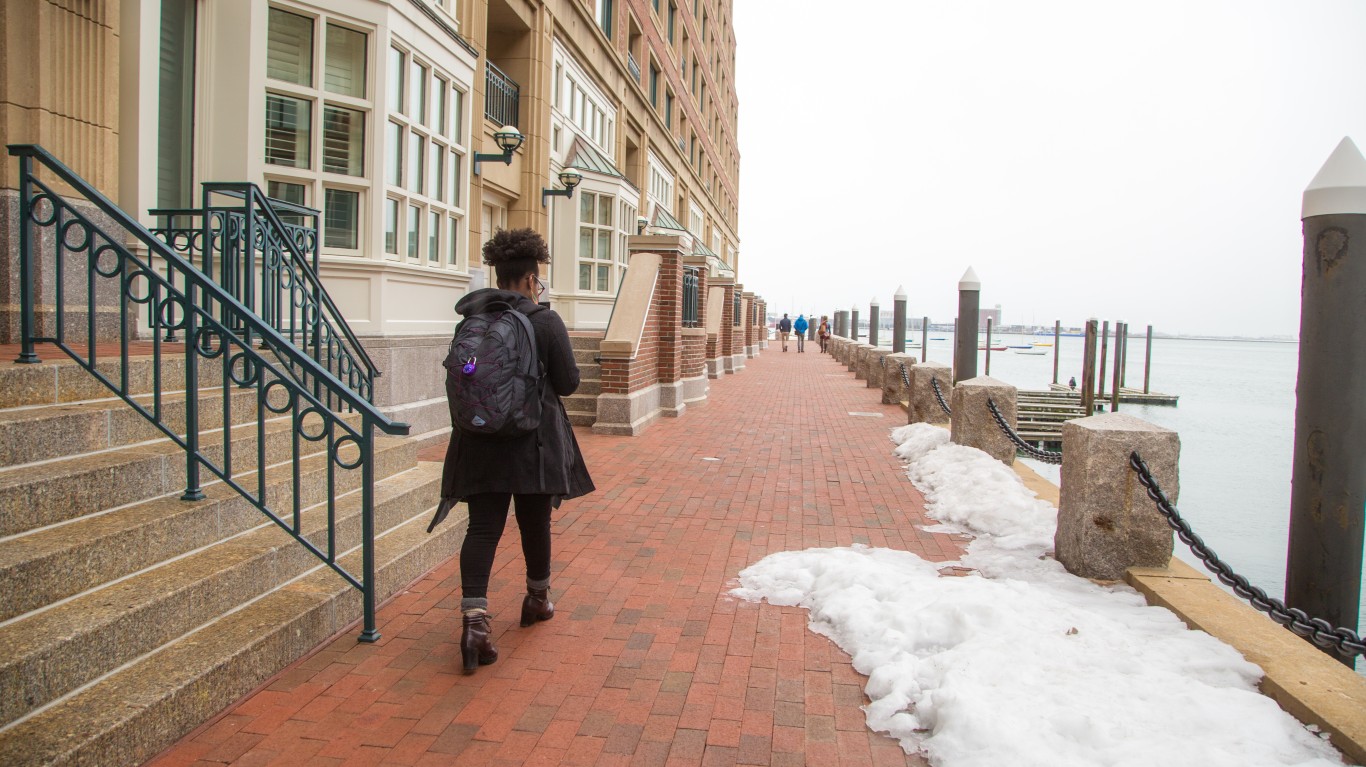
Another northeastern state, Massachusetts is known for strong winter storms and cold weather. It also experienced the brutal cold of 1934, though, like Connecticut, its coldest February day was in 1943.
- Average February temperature through 2000: 25.0°F
- Coldest February average on record: 12.8°F, 1934
- Record February low temperature: -35°F, February 15, 1943
13. Iowa
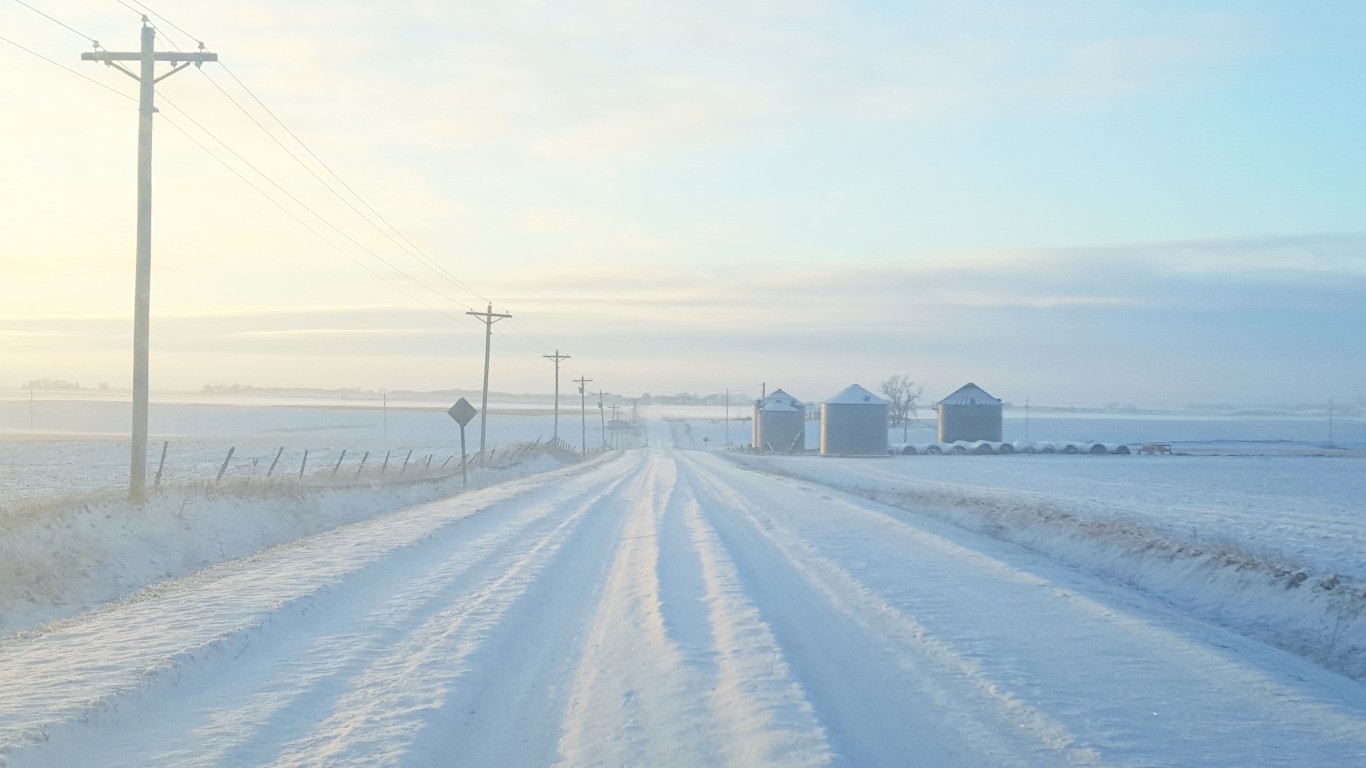
Given Iowa’s intense winters, one wouldn’t know that it lies just north of Missouri. This portion of the country experienced a brutal 1936 February, though the coldest February day was in 1996.
- Average February temperature through 2000: 22.7°F
- Coldest February average on record: 4.4°F, 1936
- Record February low temperature: -47°F, February 3, 1996
12. Wyoming

The mountain state of Wyoming is known for blizzards and snowstorms, but it hasn’t seen a colder February than the one in 1899. When it comes to one-day records in February, though, no Wyoming day was colder than the -66°F measured on February 9, 1933.
- Average February temperature through 2000: 22.3°F
- Coldest February average on record: 9.1°F, 1899
- Record February low temperature: -66°F, February 9, 1933
11. Montana
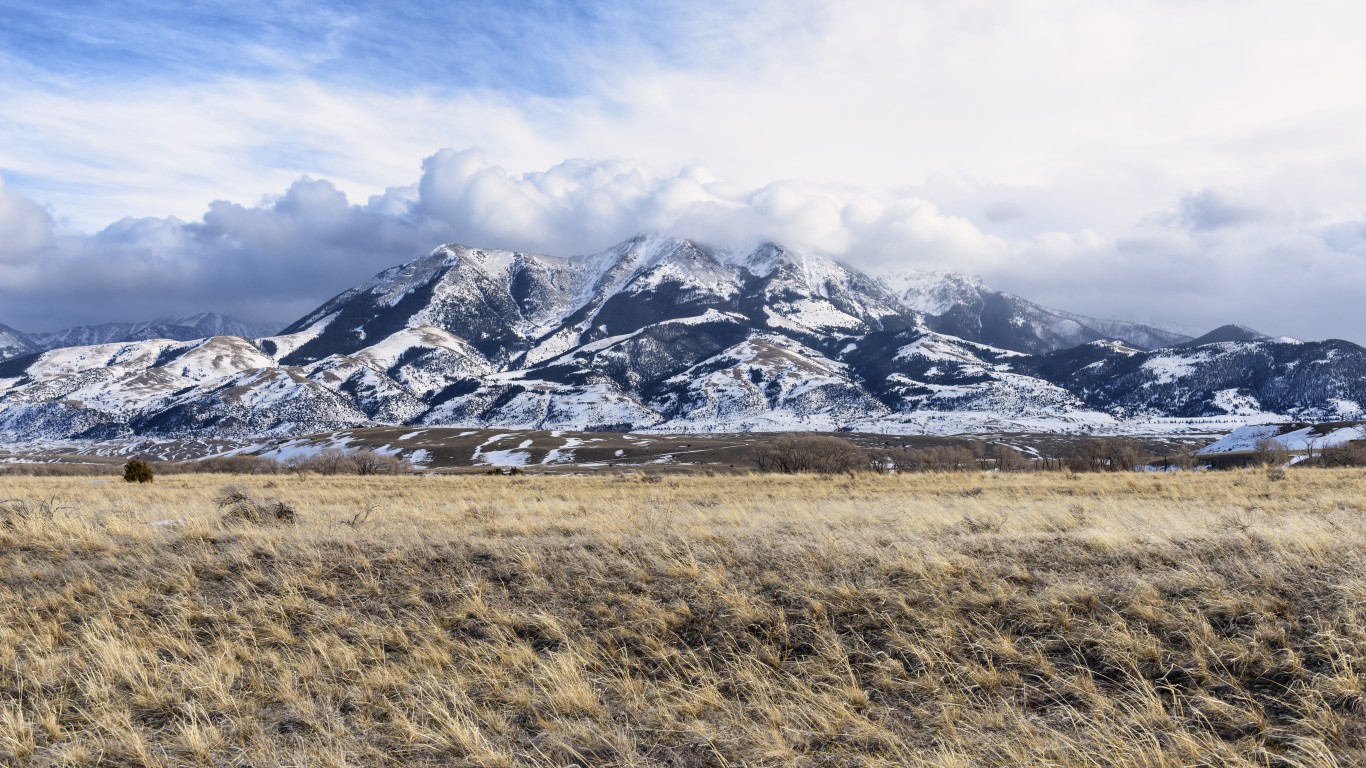
Montana’s mountains and wide open skies seem to channel the cold in February. The winter of 1936 was colder than any recorded winter before or since, and that February was the coldest Montana has ever seen. The state’s coldest February day was in 1943, like much of the Northeast that year.
- Average February temperature through 2000: 21.3°F
- Coldest February average on record: -3.9°F, 1936
- Record February low temperature: -66°F, February 9, 1943
10. New York

The state of New York sits between Lake Erie and the Atlantic Ocean and shares a border with Canada. Though New York experienced the cold February of 1934, the coldest February day there was in 1979.
- Average February temperature through 2000: 20.7°F
- Coldest February average on record: 7.6°F, 1934
- Record February low temperature: -52°F, February 18, 1979
9. South Dakota
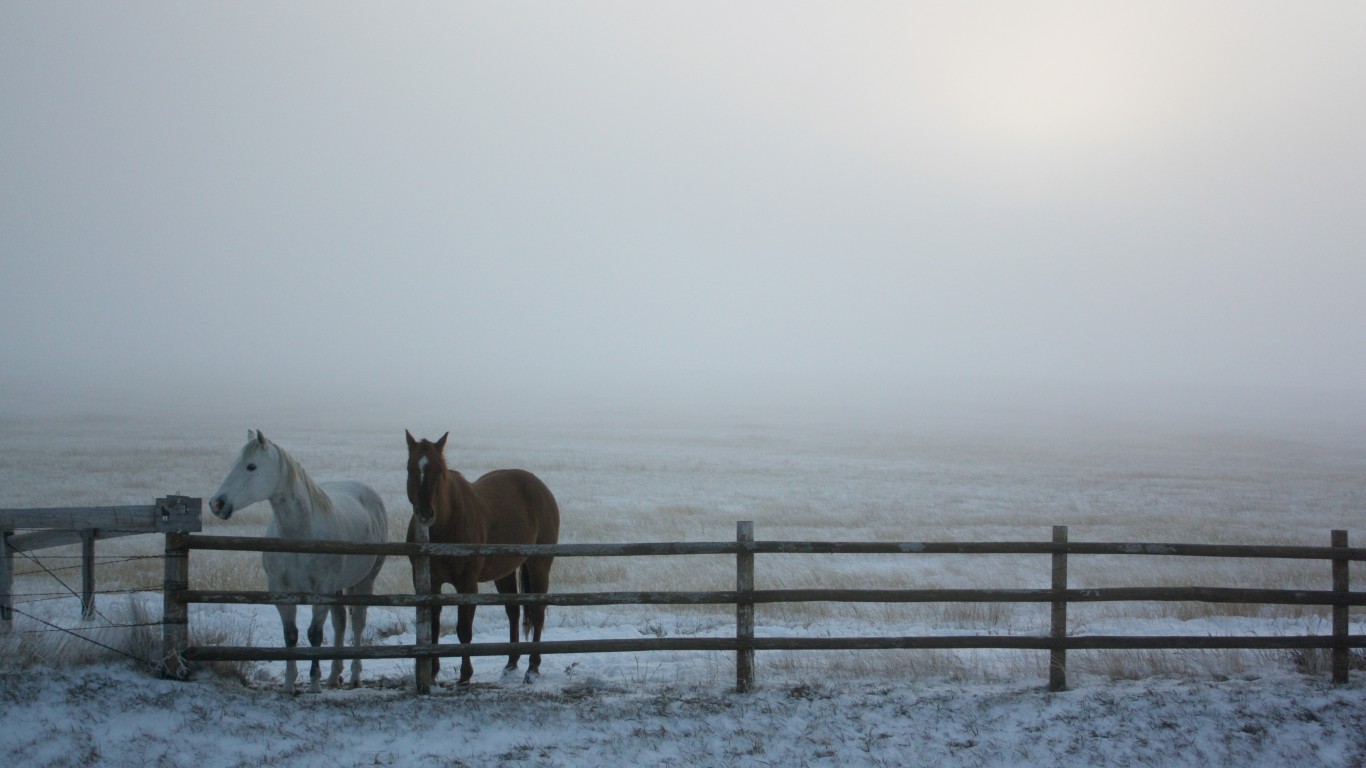
Even though it has “South” in its name, its location relative to North Dakota is the state’s only southern trait. Like Montana, the coldest February here was in 1936. Unlike Montana, that year also provided the state’s coldest February day on record.
- Average February temperature through 2000: 19.9°F
- Coldest February average on record: -5.2°F, 1936
- Record February low temperature: -58°F, February 17, 1936
8. Michigan
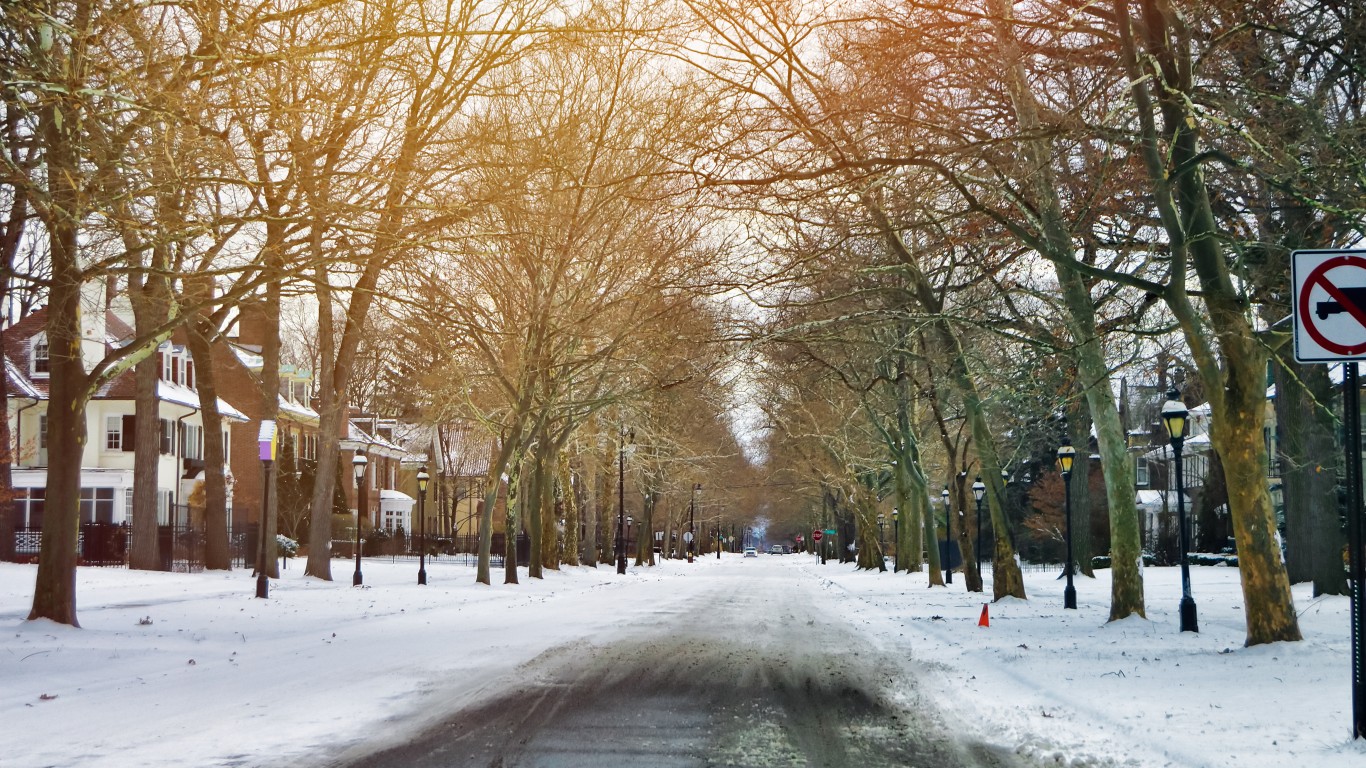
During winter, Canadian fronts carry moist air from lakes Superior, Michigan, and Huron and deposit it on Michigan in the form of lake effect snow. February is no exception to this cycle. The coldest February was in 1904. The coldest February day in Michigan coincided with the 1934 cold snap experienced by the Northeast.
- Average February temperature through 2000: 19.1°F
- Coldest February average on record: 5.9°F, 1904
- Record February low temperature: -51°F, February 9, 1934
7. New Hampshire

New Hampshire, one of the smaller states in the Northeast, is no slacker when it comes to cold Februaries. Another participant in the 1934 cold spell, the state’s coldest February day was in 2023 at the top of Mt. Washington. Along with the extremely low temperature came hurricane-force winds, resulting in the lowest wind chill ever recorded in the U.S.: -108°F!
- Average February temperature through 2000: 18.5°F
- Coldest February average on record: 6.6°F, 1934
- Record February low temperature: -46.2°F, February 3, 2023
6. Vermont

The northeastern state of Vermont is a playground for winter sports lovers. February provides plenty of opportunities for winter weather for tourists in the country’s sixth-coldest state. Again, 1934 was the state’s coldest February. The coldest February day in Vermont came during the same month as New York’s coldest: 1979.
- Average February temperature through 2000: 16.5°F
- Coldest February average on record: 3.4°F, 1934
- Record February low temperature: -30°F, February 12, 1979
5. Wisconsin
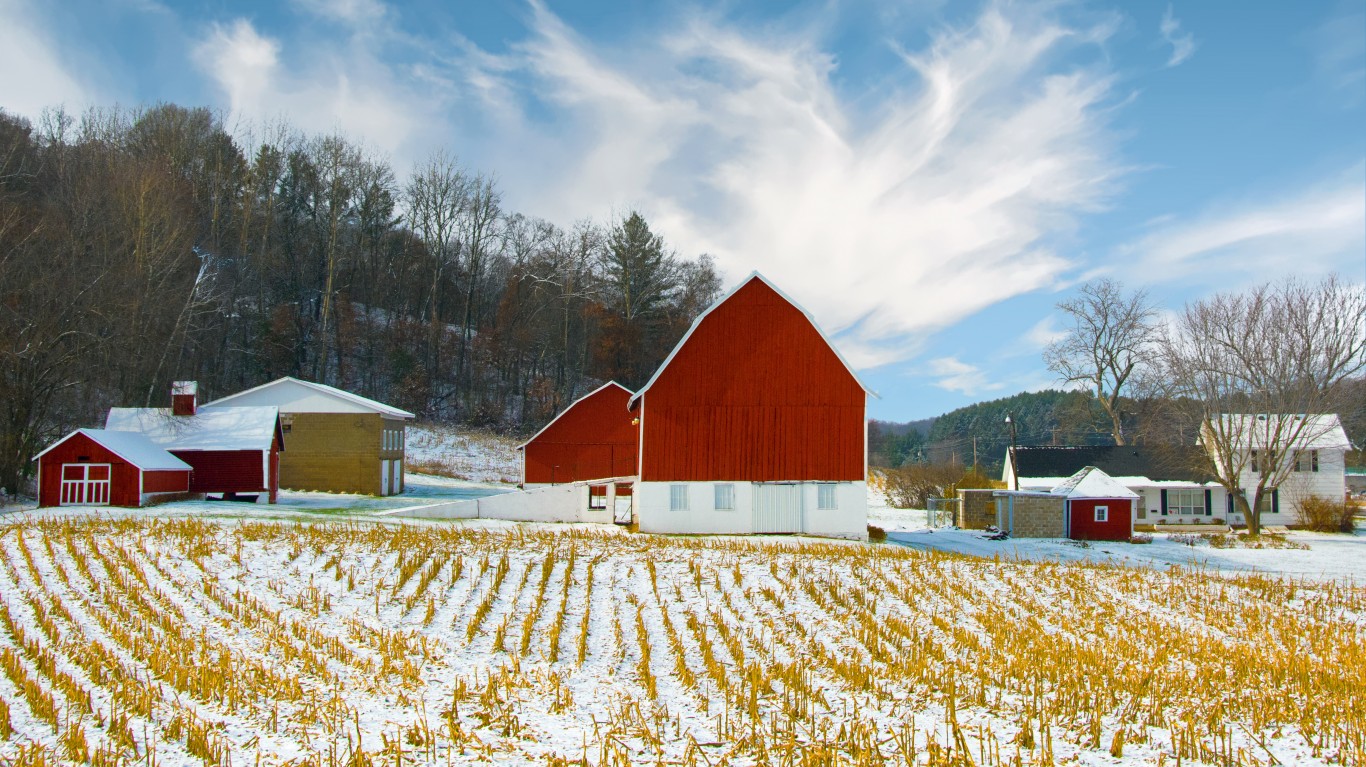
Farmers in Wisconsin know that February is a hard month. Temperatures remain extreme as they care for livestock and begin to prepare for spring. The state saw some of the historic 1936 cold spell, which made that February the state’s coldest. The two coldest February days in Wisconsin came in 1996.
- Average February temperature through 2000: 16.4°F
- Coldest February average on record: 0.4°F, 1936
- Record February low temperature: -55°F, February 2 and 4, 1996
4. Maine
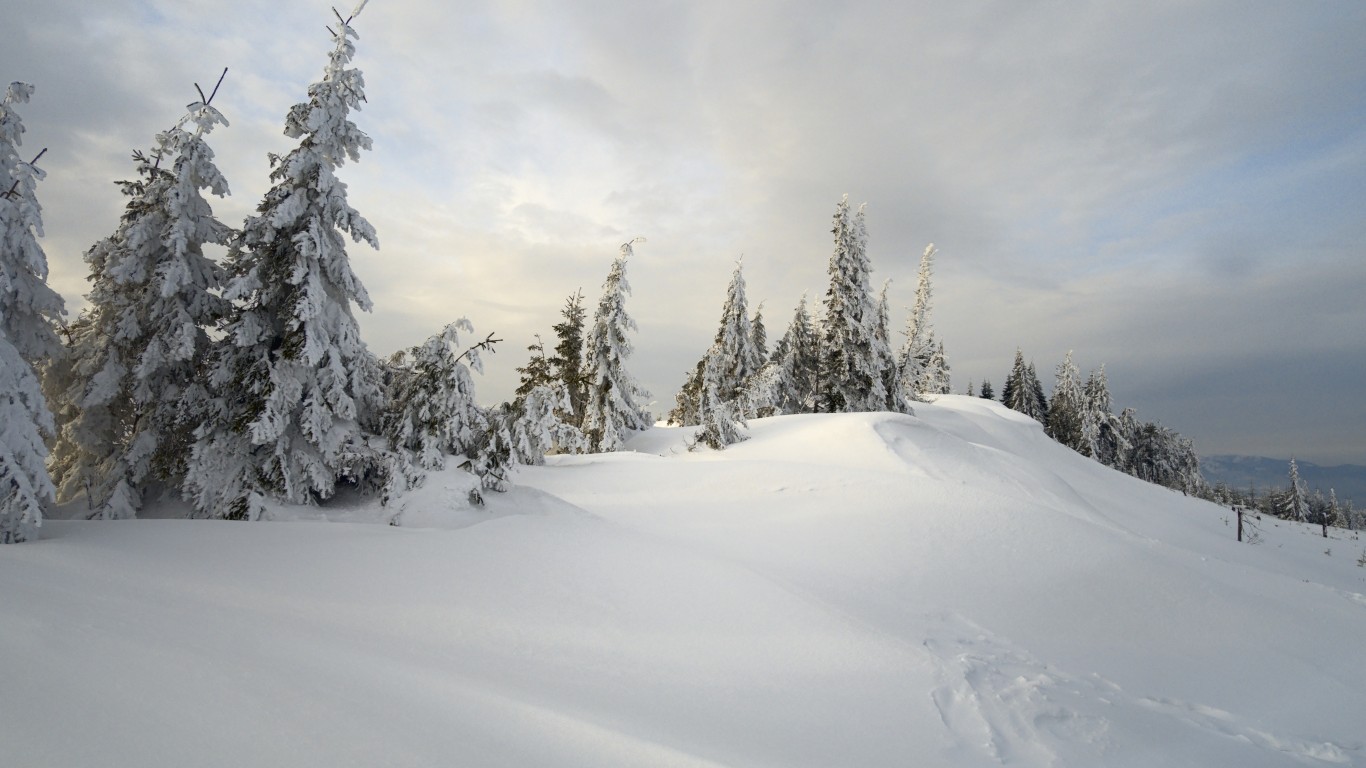
The mountains in Maine collect snowfall during the cold month of February. These hills are a skier’s delight. While owing its coldest February to the Northeast cold wave of 1934, the coldest February day came in 1955.
- Average February temperature through 2000: 14.9°F
- Coldest February average on record: 4.0°F, 1934
- Record February low temperature: -41°F, February 1, 1955
3. Minnesota

The people of Minnesota, America’s third coldest state, seem to take February in stride as they go about their daily lives. Waiting for good weather to get things done in a Minnesota winter will be a long wait. As with other Midwestern and Plains states, 1936 saw the state’s coldest February. Minnesota also was part of the 1996 cold snap, which gave it its coldest February day.
- Average February temperature through 2000: 12.1°F
- Coldest February average on record: -7.2°F, 1936
- Record February low temperature: -60°F, February 2, 1996
2. North Dakota
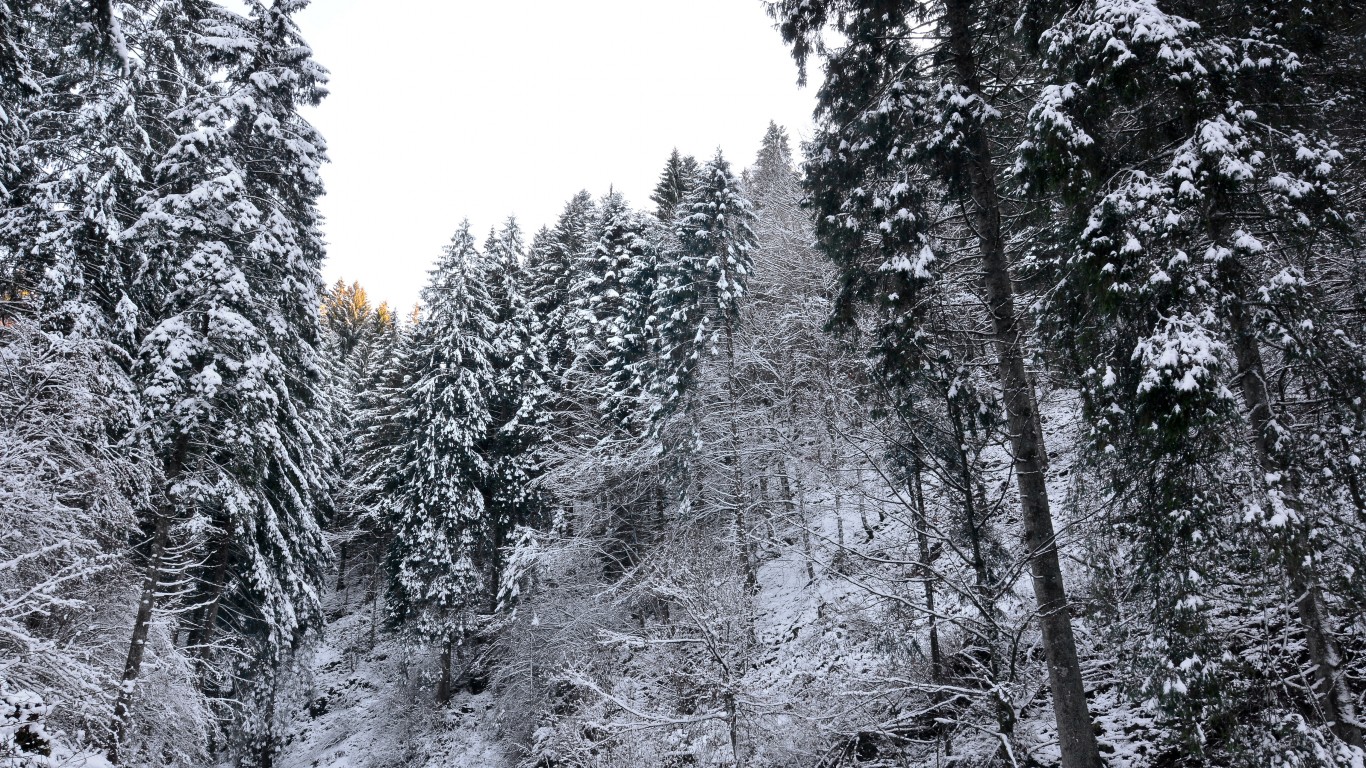
Frigid South Dakota’s even more frigid neighbor, North Dakota, experiences extremely cold Februaries. Both its coldest February, as well as its coldest February day came in 1936.
- Average February temperature through 2000: 11.9°F
- Coldest February average on record: -14.1°F, 1936
- Record February low temperature: -60°F, February 15, 1936
1. Alaska
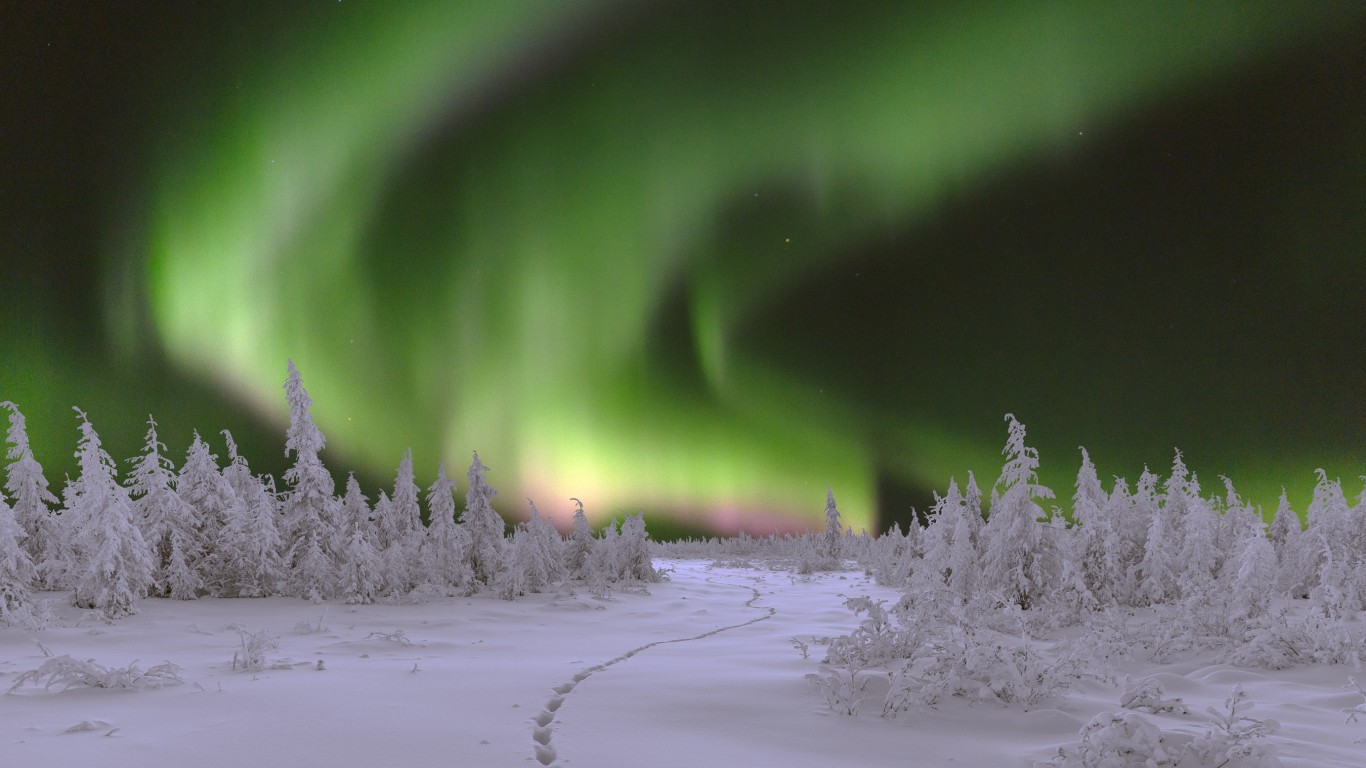
Finally, we come to the U.S.’s coldest state, and it should be no surprise that it’s Alaska. “Seward’s Folly,” while providing abundant natural resources and a once pristine wilderness, also gives inhabitants the cold shoulder in February. Being separated from the contiguous U.S., Alaska’s coldest February and February day were not common to other states. The coldest February was in 1990. Alaska’s coldest day in February came in 1954.
- Average February temperature through 2000: 4.8°F
- Coldest February average on record: -11.4°F, 1990
- Record February low temperature: -70°F, February 25, 1954
It’s Your Money, Your Future—Own It (sponsor)
Are you ahead, or behind on retirement? For families with more than $500,000 saved for retirement, finding a financial advisor who puts your interest first can be the difference, and today it’s easier than ever. SmartAsset’s free tool matches you with up to three fiduciary financial advisors who serve your area in minutes. Each advisor has been carefully vetted and must act in your best interests. Start your search now.
If you’ve saved and built a substantial nest egg for you and your family, don’t delay; get started right here and help your retirement dreams become a retirement reality.
Thank you for reading! Have some feedback for us?
Contact the 24/7 Wall St. editorial team.
